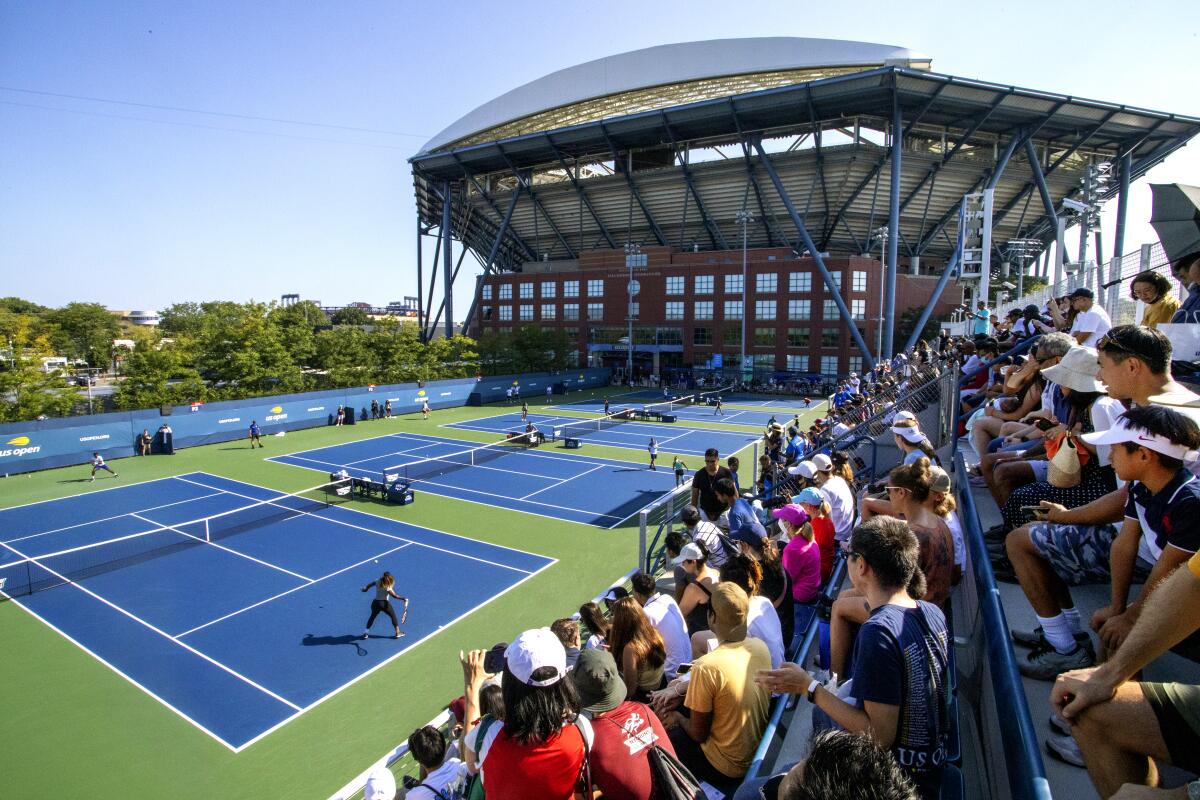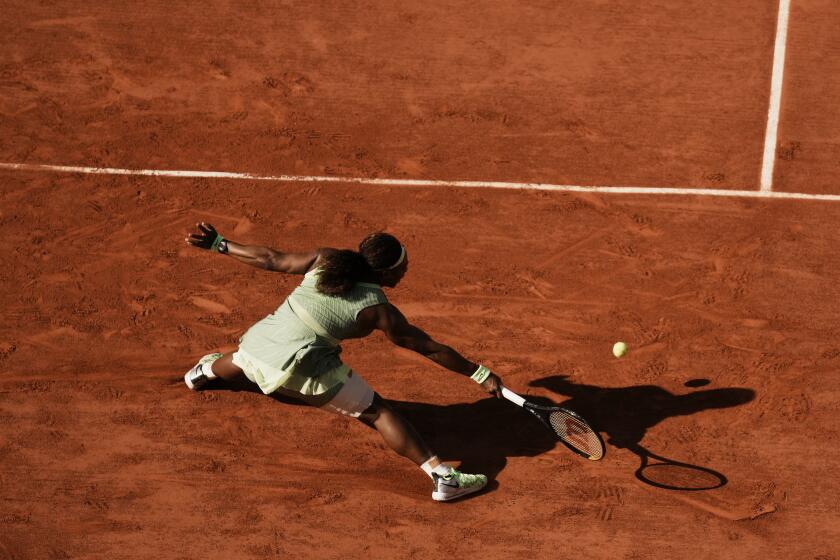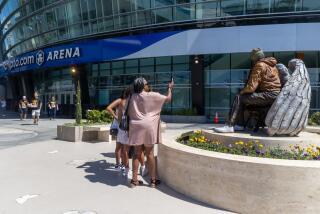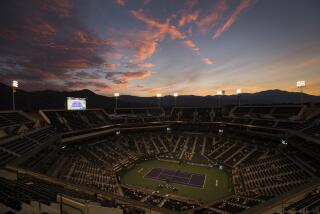Column: Name the U.S. Open practice courts after Serena Williams’ family

- Share via
NEW YORK CITY — Whenever anyone asks when’s the best time to go to the U.S. Open, my answer is always the same: the first week. Champions are crowned the second week, but for me the lasting memories are made at the beginning. The grounds are saturated with fans, every court is in use, and the best players in the world are practicing.
Yes, I want to talk about practice.
Located next to the iconic Arthur Ashe Stadium, the practice courts are the closest many fans will ever come to some of the game’s greats.
Opinion Columnist
LZ Granderson
LZ Granderson writes about culture, politics, sports and navigating life in America.
Of all the wonderful changes that came courtesy of the multiyear, $600-million renovation that began in 2011 and concluded with the opening of the new Louis Armstrong Stadium in 2018, my favorite was the conversion of an area that used to feature a handful of courts surrounded by bushes and a chain-link fence. It’s now a proper showcase of the world’s best. Its elevated risers boast 1,300 seats, and a tunnel underneath the bleachers allows fans to escape the heat while hearing exchanges between coaches and players.
There are times when the crowds at the practice courts are larger than at actual matches.
As the tennis community continues to celebrate the remarkable career of Serena Williams, who announced she is evolving away from the sport after this year’s Open, I can’t think of a better way for the USTA to pay tribute to the greatest than to name the practice pavilion after her and her family.
As the film “King Richard” pointed out, the Williams sisters’ rise from humble beginnings was a family affair — their combined 30 major singles titles; 14 major doubles titles, eight Olympic gold medals, hundreds of weeks at No. 1, all of it. We don’t have Venus and Serena without Oracene and Richard. We don’t have Venus and Serena without their lesser-known sisters whom the two often credit for being important anchors in their lives, particularly early on when their presence on tour was perceived by some as an open invitation to be racist. And not just at Indian Wells, the tournament they famously boycotted for 14 years.
Her guile and mental toughness cannot be overstated. She faced abuses and distractions but just got better and better. She slowed with age but kept winning.
The Williams family laid the foundation for Serena’s success with countless hours at East Rancho Dominguez Park, formerly known as East Compton Park.
The reason the practice facility at the USTA Billie Jean King National Tennis Center in New York should be named after the family is that it’s the perfect bookend for their story. How many times have we seen the video of them honing their craft at the park in Compton as children? How many times have they discussed the conditions of the now refurbished courts? The cracks on the ground, the gang members hovering nearby.
The reason the practice pavilion is a perfect dedication site for the family is that it reminds fans that even if you are a great athlete, if you don’t put in the work, you’ll never achieve greatness. The sports world is full of examples of physically talented athletes who were unwilling to put in the work that Venus and Serena did.
Imagine the two hosting day camps there for young players who might otherwise be excluded from the sport. Imagine the star power the Williams Family Practice Pavilion would attract during fundraisers for new equipment and shoes for kids who need them. Imagine the buzz that would ripple throughout the sports world if the two decided to have a hit together on the practice courts named after them, next to the stadium where Venus reached her first Grand Slam final and where Serena won her first major.
It would be more than honoring their careers. It would not be indulging vanity. It would be a living, breathing piece of legacy that would continue to give back to the site that has provided us all with so much.
In 2016, Venus and Serena returned to Compton to honor their eldest sister, who was murdered in 2003 in a drive-by shooting, with the Yetunde Price Resource Center. The goal was to serve those in the community affected by violence and trauma. They also were on hand for the renaming of the neighborhood tennis courts where they got their unlikely start: the Venus and Serena Williams Court of Champions. A couple of months later the two met in what was probably their last time in a Grand Slam final — the 2017 Australian Open. The victory lifted Serena to her 23rd major title and back to No. 1 in the world.
It was fitting to dedicate the practice courts where the Williams’ story started, and it would be just as fitting to dedicate the practice courts where this chapter of their lives ends.
It would honor Serena and her family. It would also remind future generations of players and fans alike of the key to their success.
Yes ... I’m talking about practice.
More to Read
A cure for the common opinion
Get thought-provoking perspectives with our weekly newsletter.
You may occasionally receive promotional content from the Los Angeles Times.













